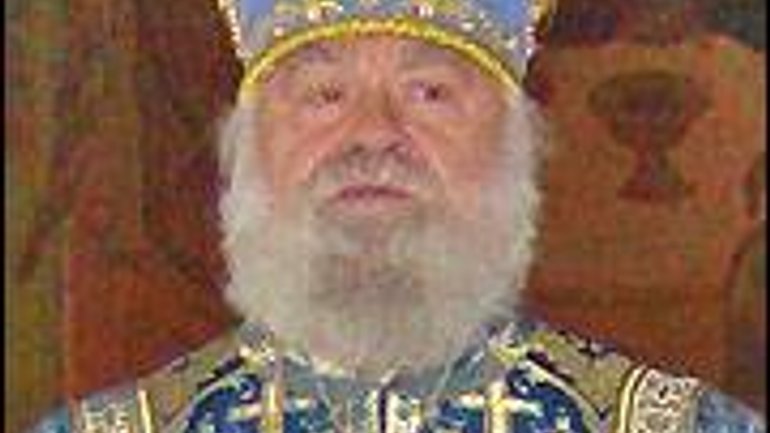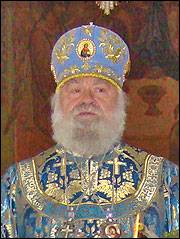"I personally bow before Hetman Ivan Mazepa, and regard him as one of the most significant figures in Ukraine’s history"

 Archbishop SOFRONII (Dmytruk) of Cherkasy and Kaniv of the Ukrainian Orthodox Church-Moscow Patriarchate
Archbishop SOFRONII (Dmytruk) of Cherkasy and Kaniv of the Ukrainian Orthodox Church-Moscow Patriarchate
I cannot remain silent in the situation which has arisen around the question about the annulment of the anathema of Hetman Ivan Mazepa. In my opinion, this phenomenon (and by the size of the societal and polemic resonance this is a socially significant phenomenon), as if in a mirror, reflected the surge of infatuation, which we observe also around other figures and events in Ukrainian history.
What can we observe? A situation has arisen that completely surprises me: in our church (and not only church) circles there is a fear of things Ukrainian. We lack the feeling of our own dignity, adequate assessment of ourselves, of our people, which during all of our history suffered so much that it is even hard to imagine. We don’t even want to think about why it was like that and not different? Why are we how we are today? We should realize and reevaluate our past, only then will there be an understanding of why our nation that lives on such a rich land has a historical past so full of suffering and distress.
I personally bow before Hetman Ivan Mazepa, and regard him one of the most significant figures in Ukraine’s history. And, first before making a row around the anathema, we should ask ourselves the following questions: who is the author of this anathema? Whom did it concern? The anathema was pronounced not on a person, a state activist, a prominent patron and commander, but on a man of straw. This man of straw, which was supposed to depict Mazepa, was carried down all the streets of Krolevets, shamed, spit on—all in attempt to humiliate the hetman.
And who was the initiator of the pronunciation of the anathema? Tsar Petro I, a person who gave the orders to kill and destroy the entire population of the city Baturyn. And this was almost 23 thousand people. So does a person so savagely cruel, a criminal, have the right to impose anathema even on an average person? And here we talk about Mazepa—a statesman who strove to achieve for his people, his Motherland, a better, dignified fate. The anathema is imposed on a man whose sister received a monastic hair-cut and served in an Orthodox monastery, and whose mother Maria Mahdalyna was the Mother Superior of the Floro-Voznesenskyj Monastery in Kyiv.
This is a person, whom without the great epoch in history of Ukrainian culture and architecture—Ukrainian Baroque—would not have been possible; a person whose 22-year administration prompted cities such as Chernihiv, Kyiv, Poltava, Baturyn, and Chyhyryn to flourish and change for the better. What is there to talk about Ukraine if even in the stronghold of Russian Orthodoxy—the Trinity Lavra of St. Sergius—a gated church was built in the style of “Mazepa” baroque!
In the period of Ivan Mazepa’s rule reforms were brought into practice that changed the face of the Hetmanate and brought Ukraine closer to the time’s European states. We can confirm that Ivan Mazepa himself developed drafts of the first Ukrainian constitutions, which is mentioned in documents of Petro I, Muscovite Voyevod, and in Ivan Skoropadskyj’s correspondences.
It is also worth mentioning the blossom in printing, municipal culture, and even the fact that the basis of the “skrypnykivskyj” orthography of the 20s of last century is taken from Ukrainian business and colloquial language that was used in the times of Ivan Mazepa’s Hetmanate.
Thus, I can boldly affirm that Ivan Mazepa is a person whose meaning of life was to bring his people out of slavery and implant dignity and self-respect so that we weren’t called “bydlos” and “khokhols.” This person is not a traitor; this is our Ukrainian Moses who wanted to carry Ukrainians out of captivity no less horrible than Egyptian captivity was for the Hebrews.
I cannot refrain from mentioning that the celebrated hetman of Ukrainian lands is buried in Romania, where they do not dishonor his memory, do not belittle his name, but on the contrary—assiduously look over the place of his burial and respect him as a prominent person who served his own people, his native land. Thus, we must for ourselves understand who are our heroes, victors and statesmen, of whom we can be proud, who we must not forget. When we understand this then we can realize and protect our own national identity.









